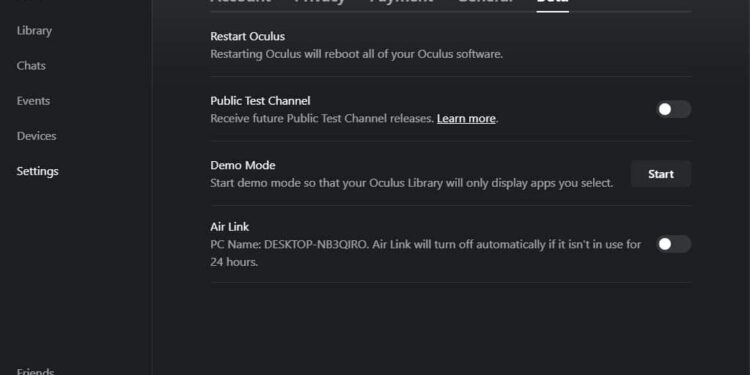Do you want to play PC VR content wirelessly on your Oculus Quest 2 using Air Link? Here’s everything you need and how to do it.
Oculus Quest 2 is a fantastic standalone headset from Facebook. There is plenty of native content available in the Oculus Quest store, but one of the key features of the Quest platform is the ability to also play virtual reality content for PC, while connected to a VR-ready PC.
Facebook’s official method, Oculus Link, was launched in late 2019 as a wired solution for playing PC VR games on Quest. However, thanks to the latest v28 software update, Air Link now allows you to play VR PC content on Quest wirelessly. Here’s how.
Note: If Air Link doesn’t work well, you want an alternative, or just want to stick to a wired connection, we also have an Oculus Link and Virtual Desktop guide for that. Everything below is purely for the wireless Air Link method.
What you need
Virtual reality ready PC
As with a normal wired Link connection, in addition to an Oculus Quest viewer, you will also need a VR-ready PC for Air Link.
Take a look at the Facebook’s Oculus Link Compatibility page to see if your computers meet the minimum requirements for Oculus Link. While this was written for wired Link connections, it’s still a good way to evaluate whether your PC is VR-ready for Air Link as well.
Specification requirements will also change depending on the game; some PC VR games require more robust specifications than others, so be sure to check the game requirements as well.
Software
Download the official Oculus app for PC, which is the software that will run Oculus Link and allow you to play virtual reality games for PC on your headphones. You can get it here, listed as Oculus Link configuration software. To run Air Link, you will need to run the latest version, v28, of the PC software.
Similarly, your Quest 2 will also need to run the v28 of the system software. This has begun to be implemented, but like all Quest software updates, it is gradual. This means that not everyone gets the update at the same time and, over time, the headset will have access to the software gradually. You can see which software version your Quest is running and check for updates by going to the Settings menu in your Quest and heading to the About section.
Wifi router
Just like Virtual Desktop, Air Link requires a good Wi-Fi router with a stable internal network connection to work reliably. Oculus recommends that you use a 5 Ghz network running on an AC or AX router. It is also recommended that the PC running the games be connected to the router directly via an Ethernet cable and not via Wi-Fi.
Configuration process
Enable Air Link on PC
Each time you want to use Air Link, you must first activate it in the Oculus app for PC.
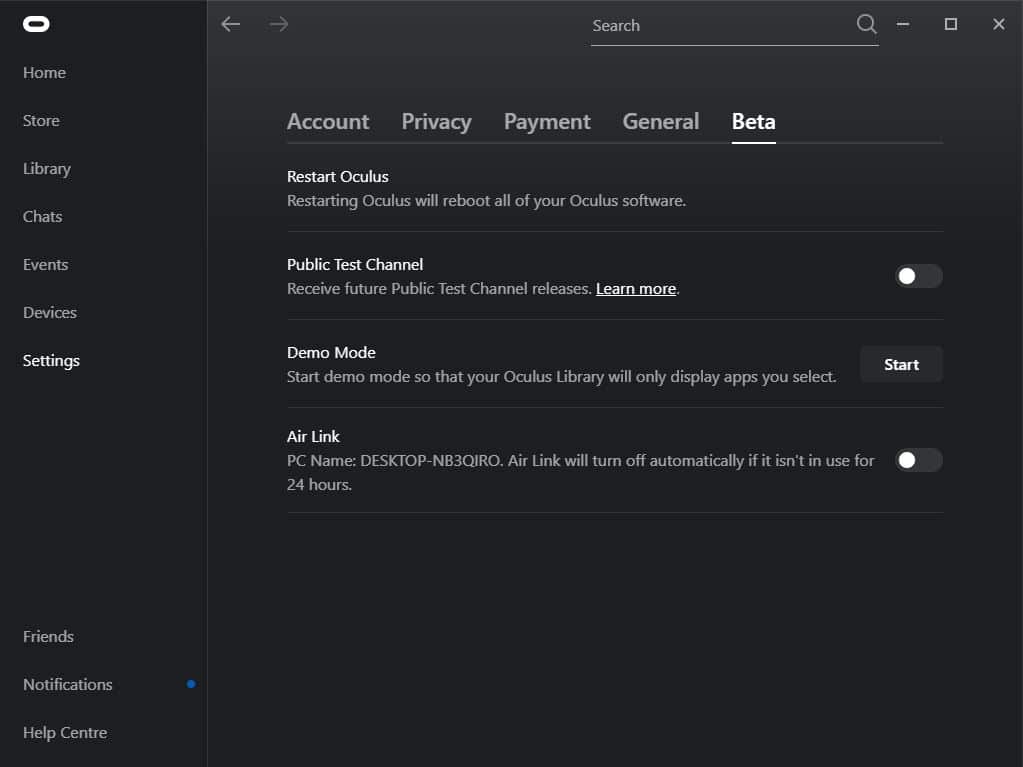
Go to Settings, then go to the Beta tab. At the bottom, you should see a switch for App Lab at the bottom. When activated, the app will change to use wireless Air Link instead of the normal wired Link connection. This switch will turn off automatically after 24 hours, so if 24 hours or more have passed between game sessions, you will have to enable it again.
Enable Air Link in Quest / Pair your Quest
You will also need to enable Air Link in Quest, as the feature is still experimental and not yet in full official release. To do this, go to the Settings menu in your Quest and then head to Experimental Functions. In this tab, you should have an option to activate Air Link. If you don’t have that option, try restarting your headset one more time. You’re not there yet? So, Facebook may not have enabled Air Link on your device yet, even if you have v28. You will need to give it some time (we really can’t say how long) and check again.
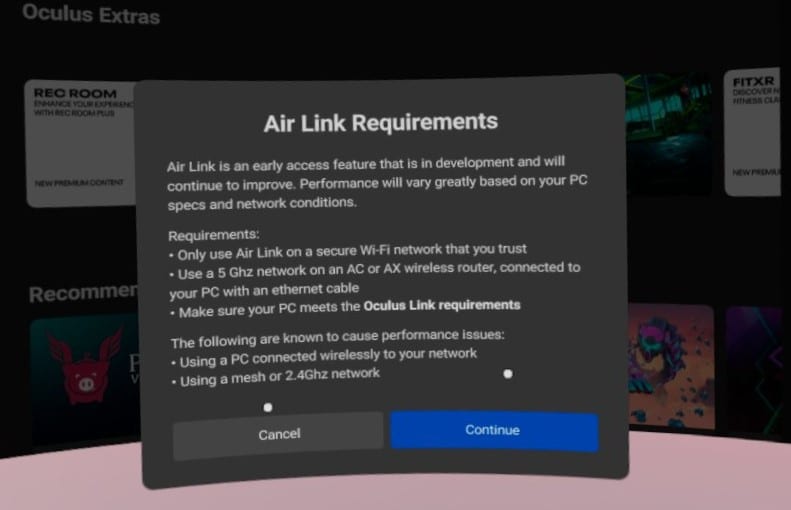
When you turn this on, you may see a dialog that warns you of the equipment and settings you will need for an optimal Air Link experience. If you have read and followed everything we have said above, you should be ready to meet all the requirements listed here. Select Continue.
Home of Air Link
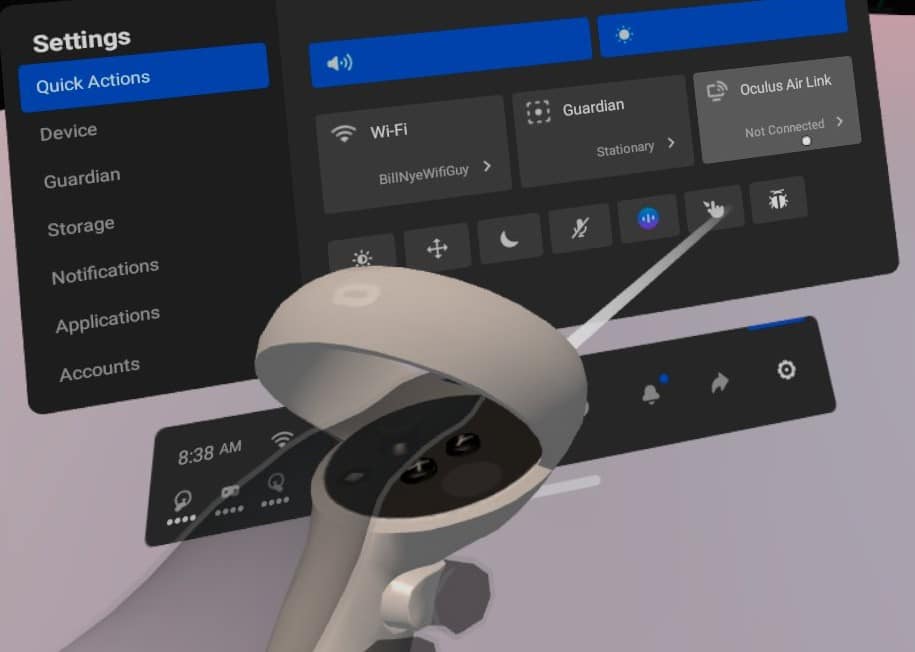
You can start Air Link from the Quick Actions menu in mission settings. Just make sure that Air Link is still turned on in the Oculus PC app settings (again, it will automatically turn off after 24 hours) and that your Quest is connected to the same network. If this is your first time using Air Link, you will be asked to link your Quest to your computer. A list of all computers on the same network as your Quest that are running Oculus app v28 for PC and have Air Link settings enabled in Beta, as described above, will appear. Select your PC and it should be paired and ready to go.
Once initiated, the process for using Air Link to play PC VR games must be exactly the same as for using a PC VR viewer natively or using an Oculus Link wired connection. Enjoy!
Performance
Debug tool configuration
Having problems with performance? If you are sure that your network is up to the task, you may be able to try other solutions. Reddit users have noticed that setting up the Oculus debug tool for Oculus Link can affect Air Link latency and performance. (although the configuration in question is only intended to affect wired connections.)
If you have set the Oculus Link bitrate in the debug tool, you will need to set it back to 0 to get the proper Air Link performance. The Oculus debugging tool can be found in Oculus Support Oculus-diagnostics Program Files .
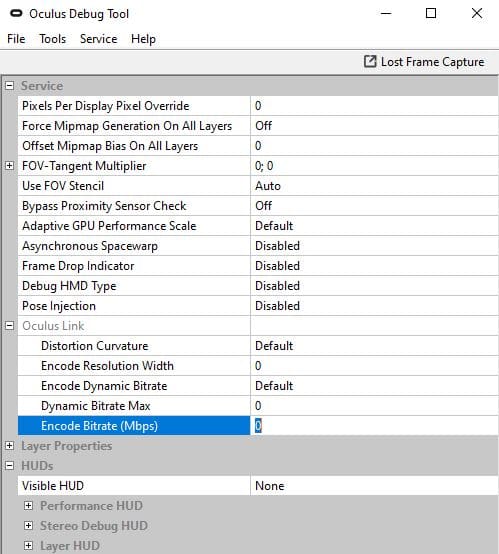
Once you have opened the debug tool, look for the Encode Bitrate (Mbps) setting in Oculus Link; make sure it is set to 0 before using Air Link for optimal performance.
Bitrate adjustment
There is also a new setting in Oculus Dash that allows you to adjust the Oculus Link bitrate while using Air Link, which can improve performance.
The settings can be found in the Air Link panel of Oculus Dash and will allow you to choose between a dynamic bitrate or a static bitrate.
Bitrate is the amount of data that is transferred through Air Link to your Quest; a higher bitrate will mean higher quality, but it can increase latency and introduce stuttering.
This setting will have to be adjusted on a case-by-case basis: the upper limit of your bitrate will be determined by the specifications of your PC and how much it can handle.
A dynamic bitrate will automatically choose what’s best according to your computer’s performance at any given time; if you don’t know what you’re doing and don’t want to mess with anything, use this option. A static bitrate will allow you to set a constant quality level, but it has the potential to affect performance. If you want a static bitrate, play around with the slider to find a setting that gives you the best quality without compromising performance. If it goes too high and Air Link freezes, the settings will automatically reverse in 10 seconds.
